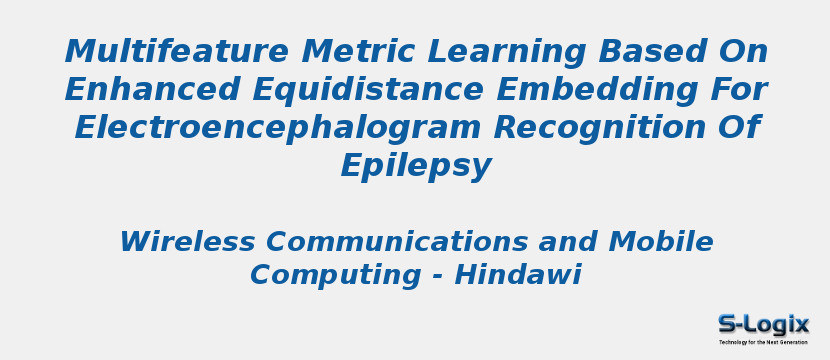Research Area: Machine Learning
Mobile edge computing (MEC) has the ability of pattern recognition and intelligent processing of real-time data. Electroencephalogram (EEG) is a very important tool in the study of epilepsy. It provides rich information that can not be provided by other physiological methods. In the automatic classification of EEG signals by intelligent algorithms, feature extraction and the establishment of classifiers are both very important steps. Different feature extraction methods, such as time domain, frequency domain, and nonlinear dynamic feature methods, contain independent and diverse specific information. Using multiple forms of features at the same time can improve the accuracy of epilepsy recognition. In this paper, we apply metric learning to epileptic EEG signal recognition. Inspired by the equidistance constrained metric learning algorithm, we propose multifeature metric learning based on enhanced equidistance embedding (MMLE3) for EEG recognition of epilepsy. The MMLE3 algorithm makes use of various forms of EEG features, and the feature weights are adaptively weighted. It is a big advantage that the feature weight vector can be adjusted adaptively, without manual adjustment. The MMLE3 algorithm maximizes the distance between the samples constrained by the cannot-link, and the samples of different classes are transformed into equidistant; meanwhile, MMLE3 minimizes the distance between the data constrained by the must-link, and the samples of the same class are compressed to one point. Under the premise that the various feature classification tasks are consistent, MMLE3 can fully extract the associated and complementary information hidden between the features. The experimental results on the CHB-MIT dataset verify that the MMLE3 algorithm has good generalization performance.
Keywords:
Multifeature Metric Learning
Equidistance Embedding
Electroencephalogram Recognition Of Epilepsy
Mobile edge computing
Deep Learning
Machine Learning
Author(s) Name: Bing Lu ,Haipeng Lu , Guohua Zhou, Xinchun Yin , Xiaoqing Gu ,and Tongguang Ni
Journal name: Wireless Communications and Mobile Computing
Conferrence name:
Publisher name: Hindawi
DOI: 10.1155/2021/3199362
Volume Information:
